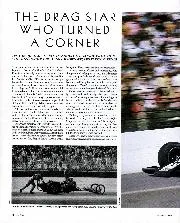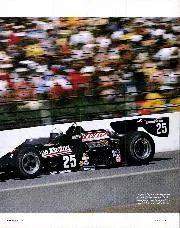Having hitherto raced only in a straight line, Thompson’s efforts were admired – according to Challenger – by Italian ace Piero Taruffi, presumably before the young American crashed on the approach to Tehuantepec with tragic consequences. Entering a turn at 60mph, he swerved to avoid a woman carrying a baby and tagged a policeman before flipping over repeatedly. As the dust settled, Thompson and his wingman Roger Flores walked away with little more than torn clothes. Only a few minutes earlier, Bob Christie had overcooked it at the same corner and thrown his car sideways to scrub off speed before coming to a rest in a ditch. The policeman had been trying to usher rubberneckers away from the scene as Thompson arrived. His Ford crushed five spectators who had been milling around Christie’s stricken car.
The fallout was devastating. Fearing retribution from angry relatives, Thompson and Flores skipped town under cover of darkness in the back of a fish truck. Just to heap on the misery, Thompson’s wife Judy had been informed of his untimely passing.
Unbeknown to Thompson, a photographer from Life magazine had captured the crash sequence from the air and, in a subsequent article, it was clear to all that Thompson had valiantly tried to avoid injuring anyone. Just the morale boost he needed for a return bid a year on, but this time with race and recce cars, a supply of spares and cash. The result was a class win. Suitably bolstered, Thompson went for broke. By the end of the 1950s, he was mixing it with So Cal’s finest road racers in a fearsome Kurtis-Cadillac, inventing the influential slingshot dragster, creating the first low-profile tyre (apparently) and trying to emulate childhood hero Frank Lockhart with a Land Speed Record bid.

Graham Hill in the Thompson Chevrolet at the 1963 Indianapolis 500
Getty Images
Widely espousing the belief that he was somehow channelling the charismatic Indy 500 winner and speed junkie, Thompson similarly aimed to be the fastest man on earth. After he had persuaded Pontiac chief Semon ‘Bunkie’ Knudsen to cough up four V8s, his super-streamlined Challenger 1 cracked 400mph at Bonneville in September 1960. Unfortunately, its stressed-out quartet of supercharged engines weren’t up for the mandatory second run so his efforts were never ‘official’. Appalled by the jet-powered vehicles that ended piston-power’s reign, he was done with chasing ‘the big one’.
No matter. Mickey Thompson Enterprises was up, running and booming. And besides, he had bigger fish to fry. He’d set his sights on winning the Indy 500, a decision that would bring with it disaster and infamy in equal measure.
Having separated the Harvey Aluminum manufacturing firm from a six-figure sum to back his 1962 bid for Brickyard glory, Thompson then tapped Knudsen for GM’s new aluminium-block V8. Designed largely by ex-pat Englishman John Crosthwaite, Thompson’s new baby trumpeted the rear-engined approach, with Dan Gurney driving the only qualifier.
“Mickey got a hard time at Indy, largely because of what happened later, but that car was pretty good,” recalls the effortlessly friendly Californian. “He was full of ideas – probably too many for his own good – and was always looking for the next innovation but I will stand up for that 1962 car. It’s just that, with him being a drag racer, he never could build an engine that lasted more than a quarter of a mile!”







